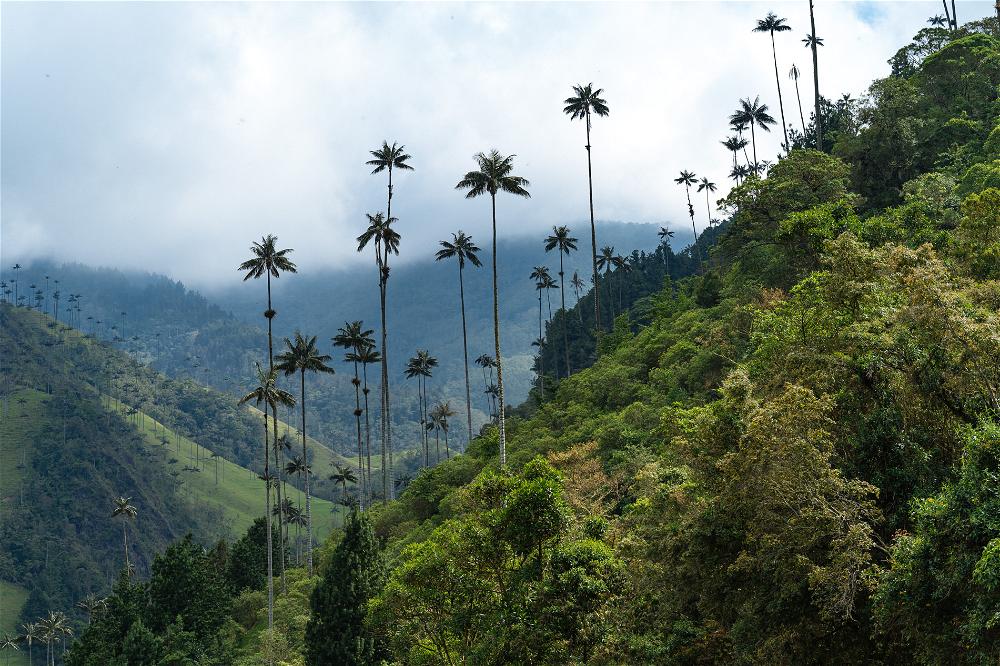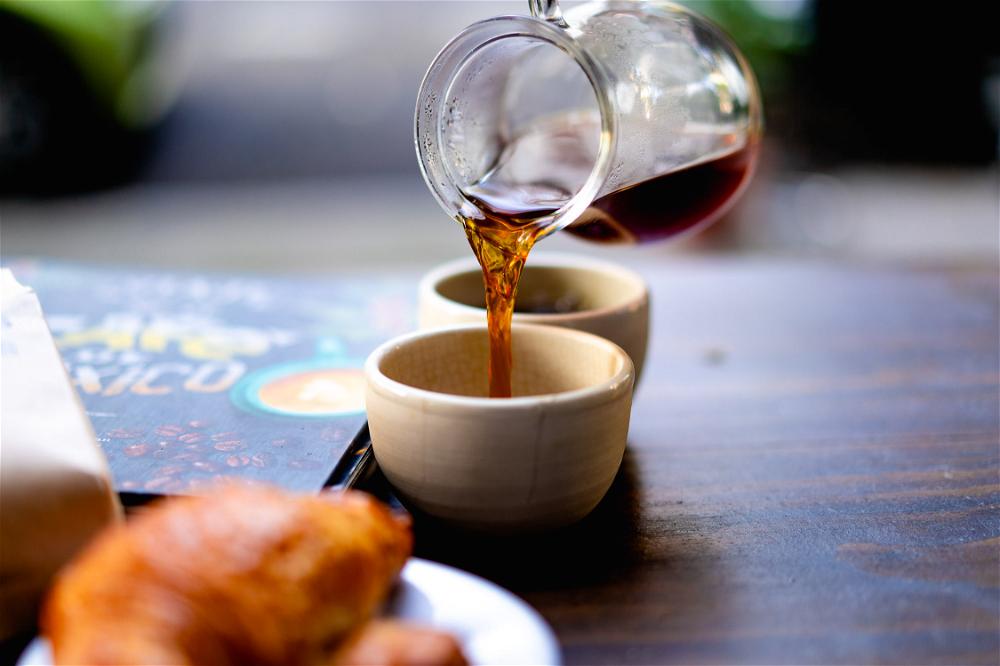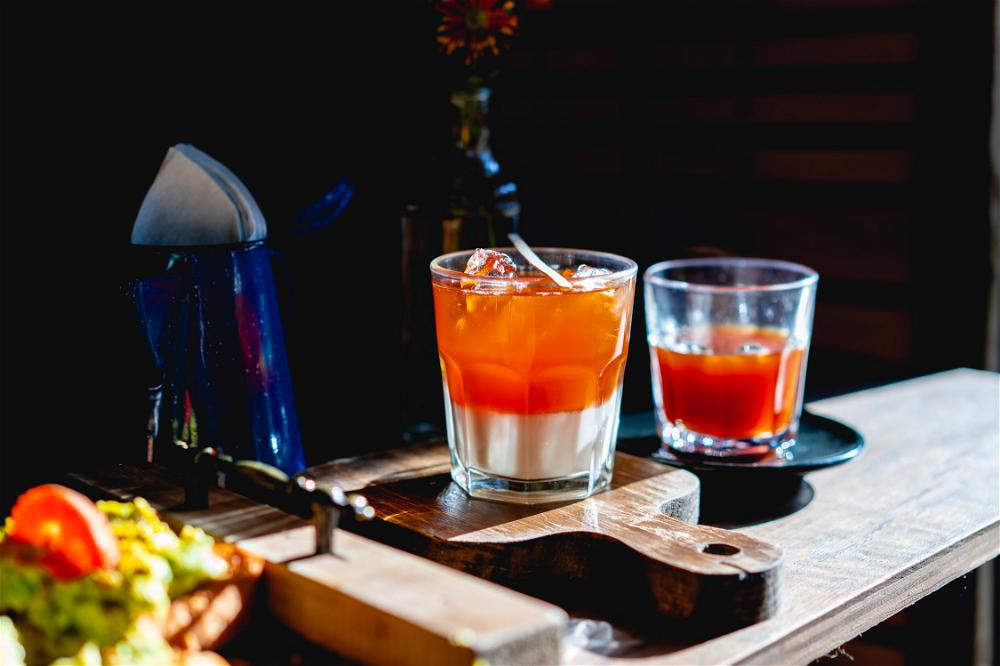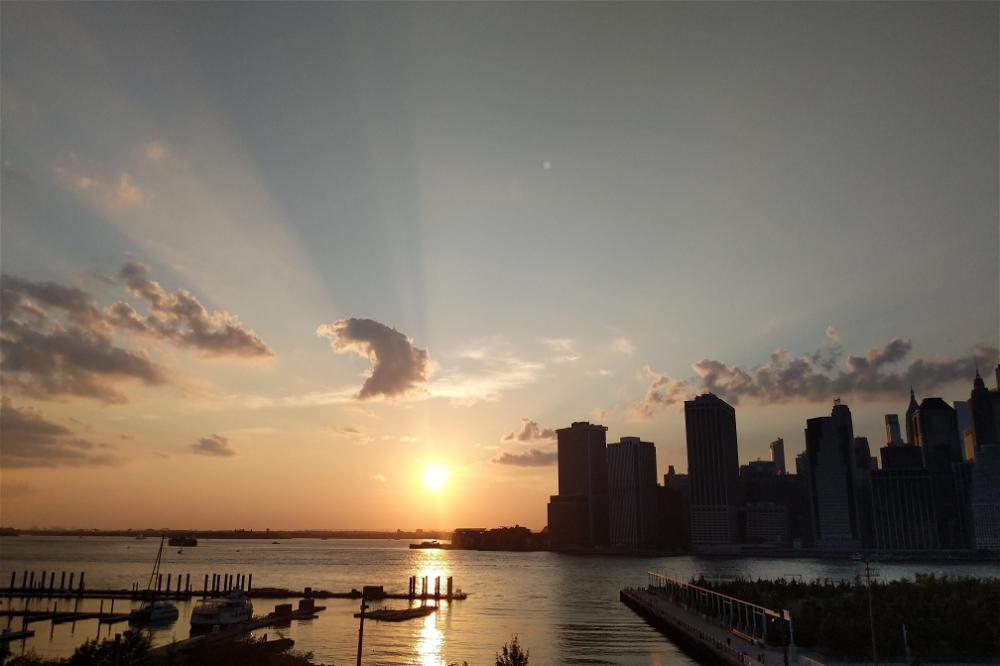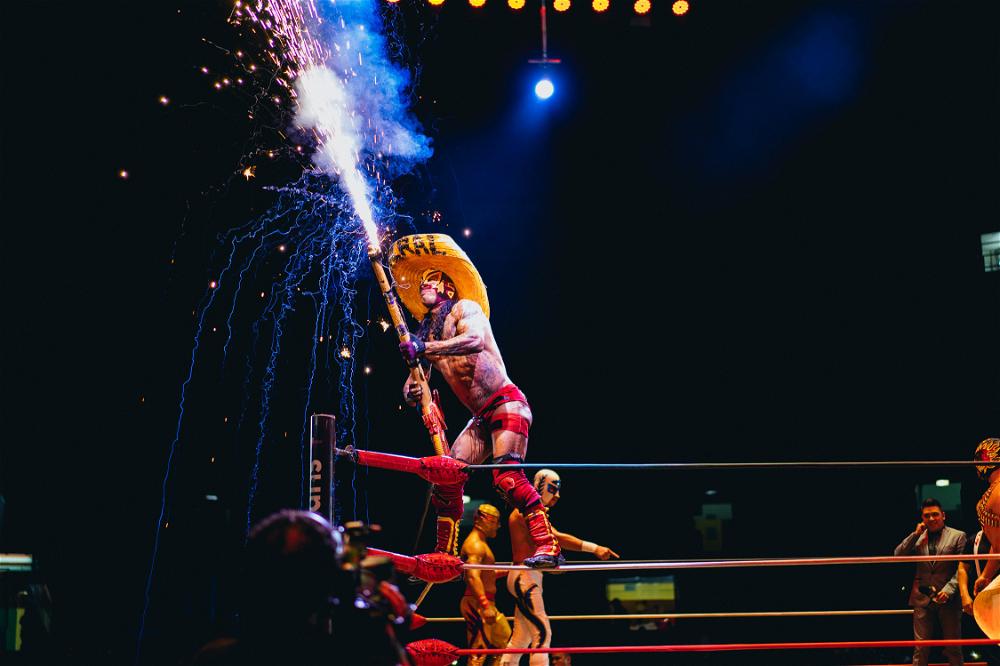Medellin City Transformation Tour Review (What to Expect)
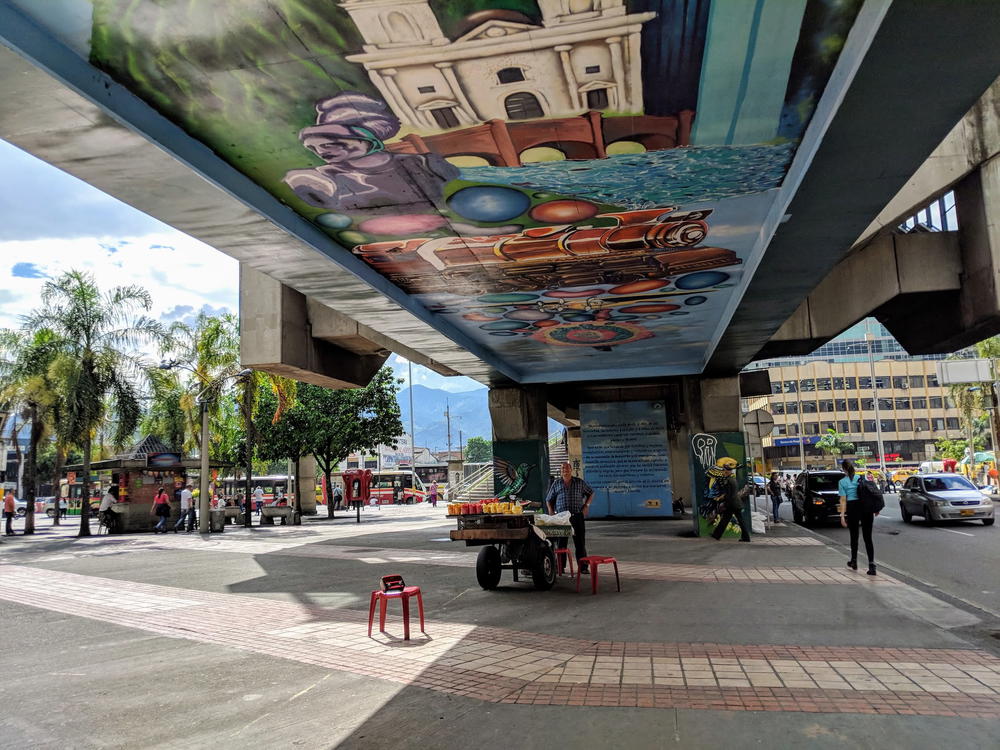
For a way to learn more about Medellin’s past and the transformation of the city, check out a Transformation Tour during your trip. Here’s a review of the one we took with Epic Tours.
This article may contain affiliate links. We earn a small commission when you purchase via those links — at no extra cost to you. It's only us (Becca & Dan) working on this website, so we value your support! Read our privacy policy and learn more about us.
Table of contents
- What is the Barrio (City) Transformation Tour?
- How to decide on a “Transformation tour”
- Which tour companies are offering this tour?
- Who are the Barrio (City) Transformation tour guides?
- How to stay safe during this tour
- What to expect on a Transformation Tour
- Was the Barrio Transformation Tour worth it?
- How to book the Barrio (City) Transformation Tour
- More tour ideas for Medellin
The Medellin City Transformation Tour with was one of the most important things I did during my first week (back for our second time) in Medellin.
Most visitors to Medellin know that the city had a dark and tragic recent past, but it’s challenging to find a good way to learn about how Medellin transformed from the most dangerous city on earth to a what we see today.
After taking a city transformation tour in Medellin, I was able to learn about how Medellin changed drastically during only two decades. Having a local guide who told me first-hand about what life used to be like here was one of the most powerful aspects of this tour.
Here’s our review of the experience so that you can decide if it’s for you.
Tour companies may change their tour offerings, tour route itineraries, tour names and content all the time. This review reflects the experience we had on the City Transformation Tour when we took it, and your tour may go to different places in Medellin.
What is the Barrio (City) Transformation Tour?
The City Transformation Tour, or Barrio Transformation Tour, depending on which tour operator you go with, is a tour that focuses on the dark past of Medellin and how the city transformed to what it is today.
The tour starts out by meeting your guide and hearing their experience of growing up in Medellin before current times. Depending on which tour company you go with, you may visit some local neighborhoods, take the metro, the cathedral prison, the Memorial Park, the Casa de la Memoria Museum or a gravesite.
We’ve found that since we took the City Transformation tour, Epic Tours has renamed it as “Memorial and Transformation Tour (Escobar Tour).” In all honesty, I liked the exact tour we took because it did NOT focus too much on Escobar, but on the experience of the “people of Medellin.” I wasn’t interested in learning much at all about Escobar.
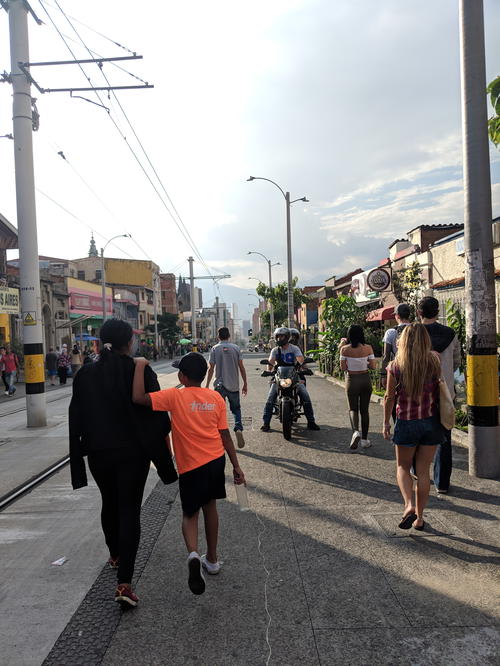
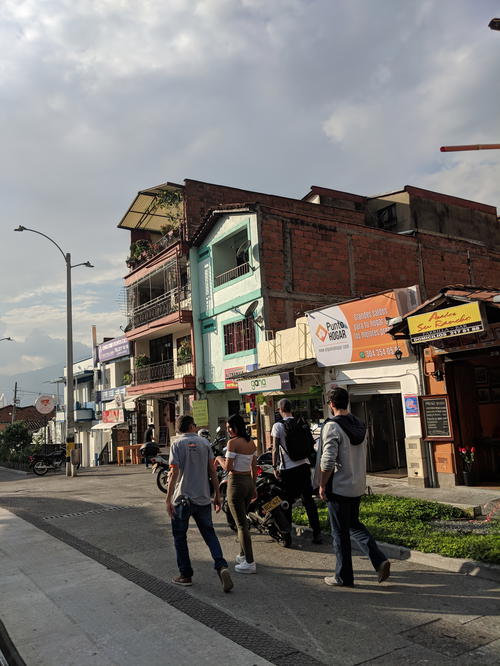
How to decide on a “Transformation tour”
If the current “Escobar Tour” offering from Epic Tours does not interest you, I recommend the Barrio Transformation Tour from Real City Tours, the host of the Medellin Free Walking Tour.
Medellin City Services also offers a Barrio Transformation Tour that focuses on the neighborhood Moravia in Comuna 4. A tour like this one would also take you to Comuna 13 (graffiti tour).
Which tour companies are offering this tour?
Like I mentioned above, a range of tour operators in Medellin are offering tours along the lines of a “transformation tour.” This phrase is being applied to the “City Transformation” of Medellin, as well as the “Barrio Transformation” of Moravia in Comuna 4. If you go on a tour coupled with the history of Pablo Escobar, that will fall into the “city transformation.”
Tour companies offering these tours are the major tour operators in Medellin of Epic Tours and Real City Tours, as well as other smaller tour companies.
Who are the Barrio (City) Transformation tour guides?
The Transformation Tour guides are passionate young Medellin natives and Colombians who want to teach visitors about their city and its history. We’ve had such fantastic tour guids for all the activities we’ve done in Medellin. We think what makes them stand out is that much of Medellin’s intense history is so recent, and most guides have first-hand knowledge and first-hand stories to share with you.
How to stay safe during this tour
We felt completely safe during this tour because we knew our guide would only take us to approved places where foreign tour groups typically go. We practiced general safety precautions, as we know that being a tourist group in a Colombian city means being somewhat of a target. Remember to be careful when using your phone or a large expensive camera.
You can read our Medellin safety guide for a full list of tips.
What to expect on a Transformation Tour
Like other tours we’ve been on in Colombia, the tour starts out with meeting your guide and doing introductions. Then, you’ll jump right into learning your guide’s perspectives and hearing stories about the transformation of Medellin.
Meet your tour guide
Our tour guide Manuel started out by introducing Medellin of the past: when he was a teenager, he would eat breakfast with his family in the morning, not knowing if there would be food on the table for dinner.
When he was a teen, he was playing soccer with friends one day, and he became the unfortunate victim of peripheral gunfire when a bullet from a nearby shootout hit his arm. He illustrated for us that Medellin was a terrible place, due to the conflicts that arose from the drug cartels, guerrilla warfare and Colombian government.
With this as the backdrop for what we’d learn on the tour, we went to the first neighborhood in the itinerary.
Walking around the El Hueco neighborhood
Manuel’s narrative for the day was that Medellin has turned itself around and has become a city full of people who want peace, progress and community. We started by walking around the downtown area called El Hueco, where we saw street vendors, a bustling shopping street and the mural-type artwork that now decorates the concrete pillars of the above-ground metro.
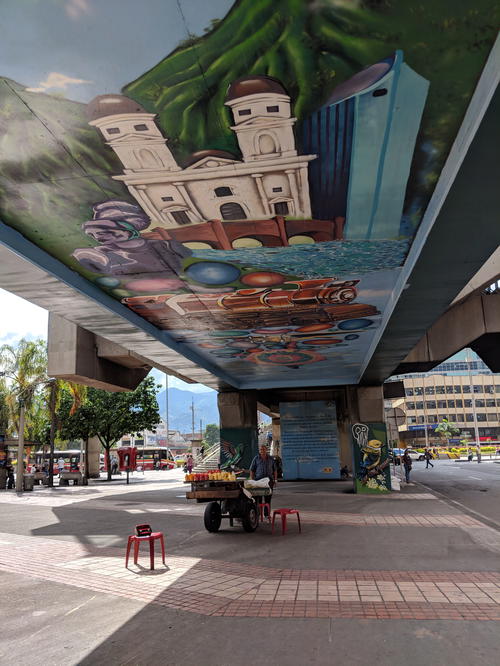
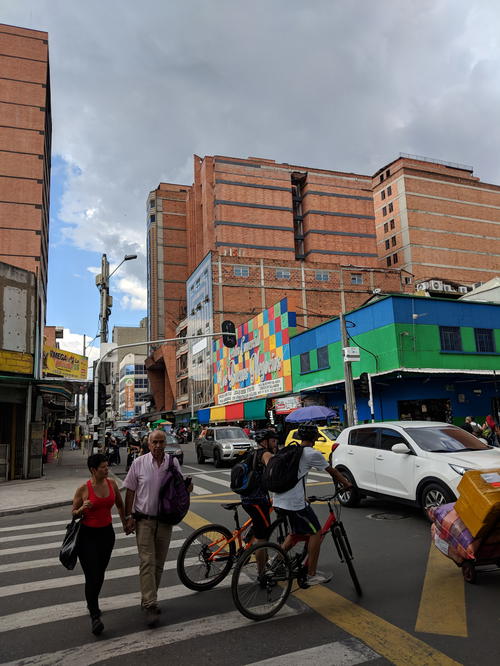
Learning about Medellin’s metro system
In fact, the city’s metro has become a symbol of Medellin and has done wonderful things for the people. What’s most impressive is how much the people love the metro, and how they treat it - the metro has no graffiti and is very safe. The metro system has helped connect the poorer areas to the city center, which has improved life for thousands.
To learn more about lots of safety topics in Medellin, check out our guide that answers the general topic, “Is Medellin safe?”
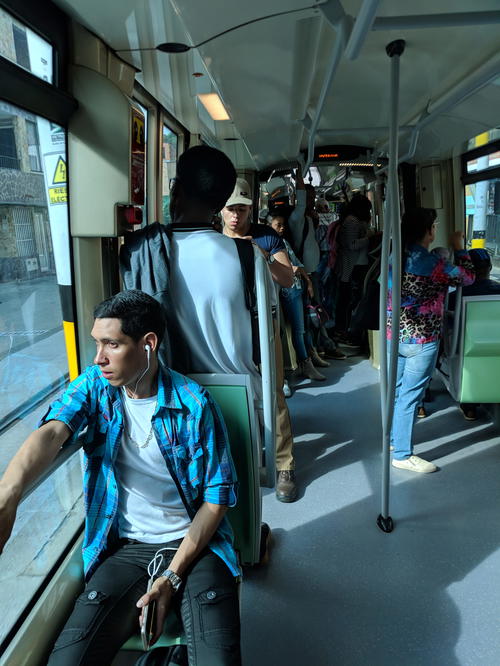
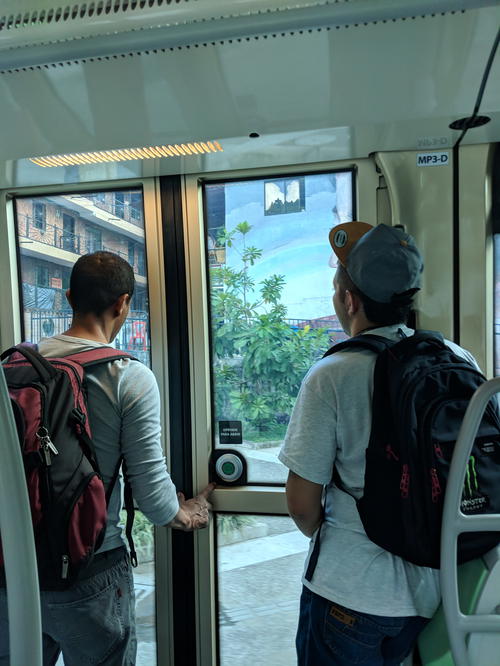
Taking a ride on the Tranvía & Metrocable
We got to take a ride on the Tranvía from San Antonio station, and we were heading toward one of three cable car systems in the city. After we ended the smooth Tranvía ride uphill past multiple neighborhoods, we transferred to a connecting station for the Metrocable, the cable car system that connects less-wealthy neighborhoods higher up in the valley.
This is where the hills start getting steep, and from the cable car you can see that entire sidewalks become staircases here. It became clear to me after we took the cable cars that building metro train tracks in these steep hills would have been impossible, and so it seems the Metrocable (cable car system) was born.
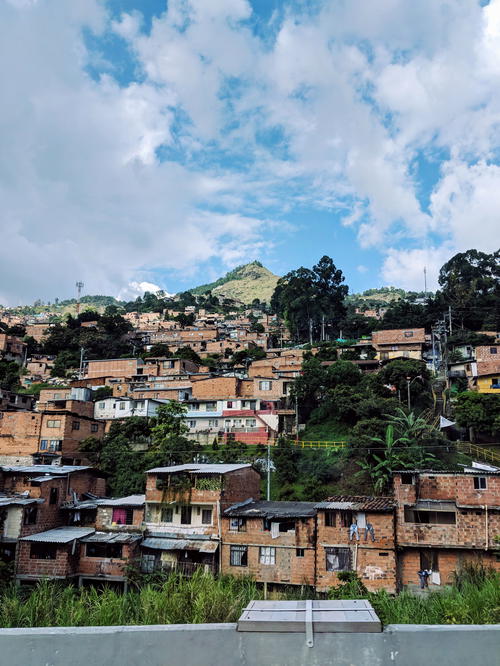
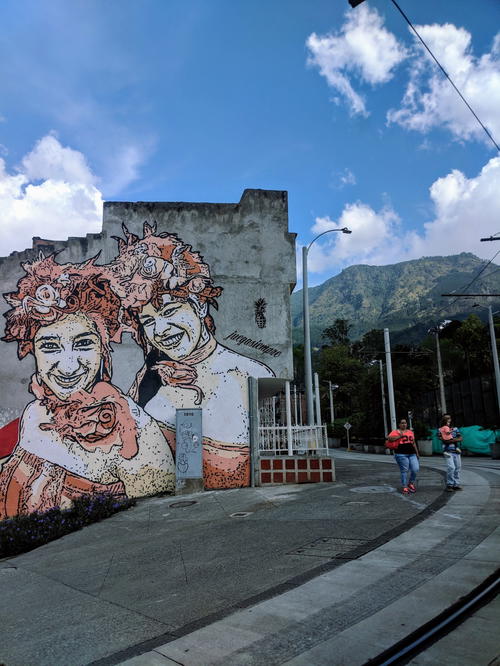
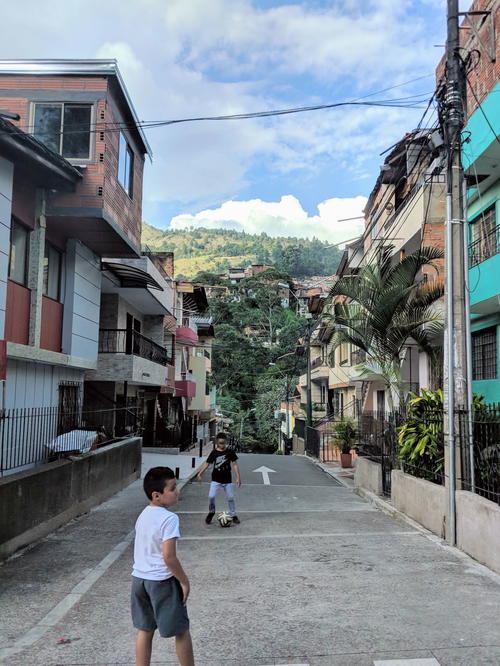
Seeing how local communities live
The cable car route was extensive, and the views were astounding: we saw children playing sports, roofs of corrugated metal and the overwhelming green landscape that surrounds the valley.
It was alarming to think that before the entire metro system, many people in these areas had two or three-hour commutes to the city center, despite being so geographically close, and that the developments of the 1990s-2000s changed everything.
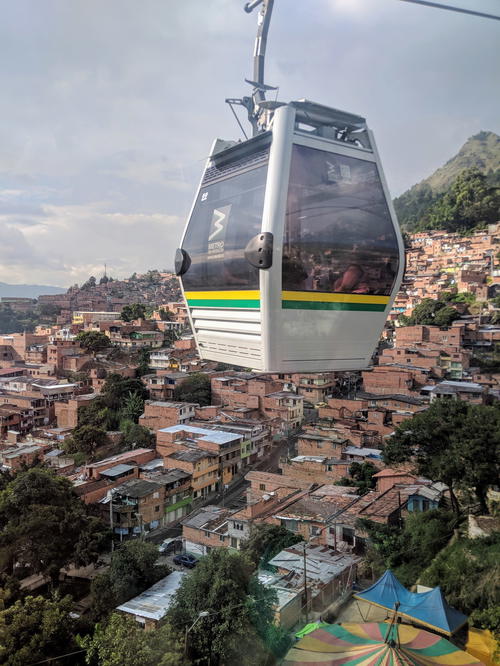
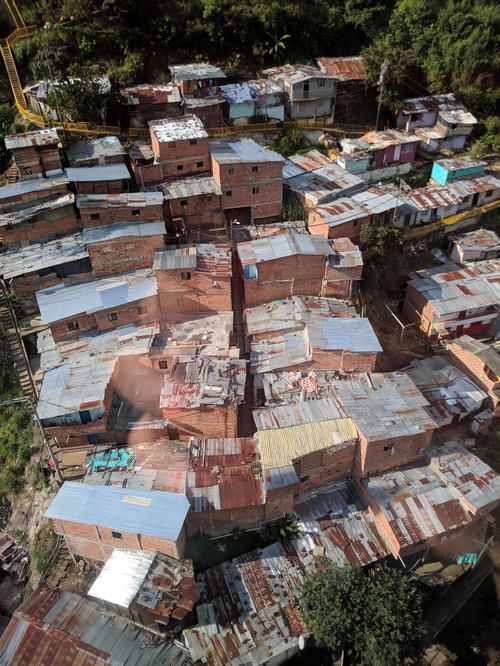
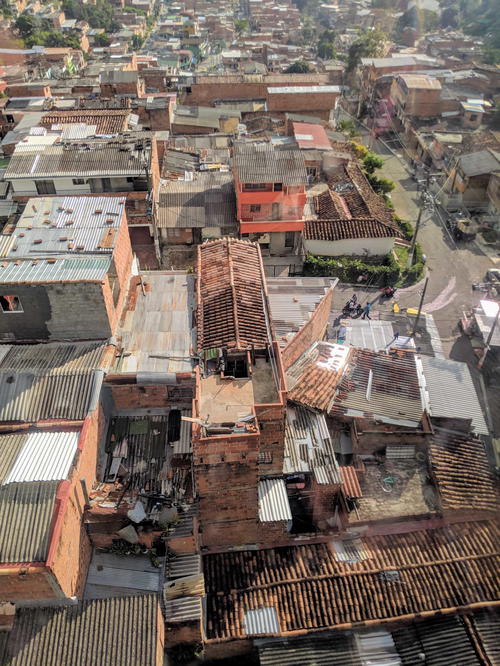
Visiting Museo Casa de la Memoria
The culminating point of the tour was the Museo Casa de la Memoria, a solemn museum in the Buenos Aires district that tells the story of the armed conflicts that enveloped Medellin for a good part of the last century.
This is a must for tourists who want the full picture of Medellin, and even if you don’t take the tour, going for a visit is one of the best things to do in Medellin.
Much of the museum is in Spanish, but the photos and videos are subtitled in English and tell a story on their own. In the first room, an interactive timeline allows you to scroll through the years and read about news as it related to Colombia, the Antioquia department or the city of Medellin.
There were chilling exhibits with simple household objects used as symbols to illustrate ideas - broken plates to show how life became broken for farmers during the conflict, pencils and paper to symbolize how many journalists were killed or went missing and small twigs with bands of colors to represent the different indigenous tribes of the region.
It’s these visuals that stuck with me.
The museum allows visitors to progress into a room that’s dark except for specks of small lights and mirrors that reflect them, with images of the fallen in family photos, throughout the years. The images brighten and then dim, as you walk through the chamber.
It’s so important to remember that many innocent people perished during the years of conflict and terror and that these times are still so recent.
The bottom floors of the museum represent the 1980s and the 1990s, and an interactive wall allows visitors to complete the phrase “Medellin es…” (Medellin is) with pencil and paper on a wall. The last image you’ll leave with is a giant yellow-and-black wall that reads “SOBREVIVIMOS,” which means “We survive.”
From there, the museum walls opened into a neighboring park, complete with Medellin’s signature greenery and plant life. To me, this symbolized peace and hope.
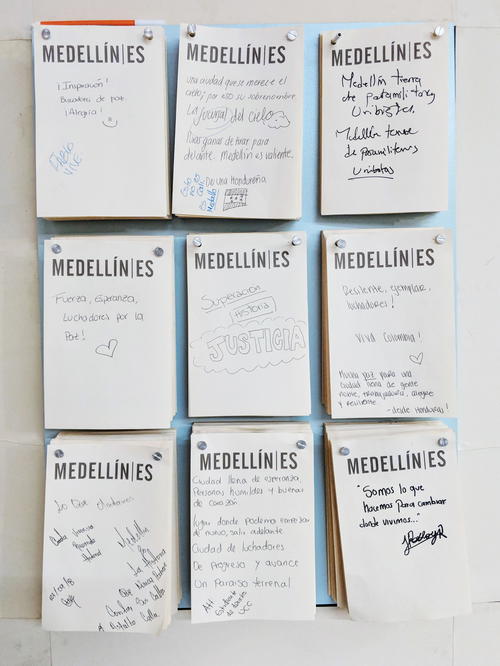


Was the Barrio Transformation Tour worth it?
This tour was a powerful and informative experience. Our group learned about how the conflict (that many people unfortunately only learn about from the Netflix show Narcos) was a real and true difficult time for Colombians.
Our guide touched us in so many ways, from his sincerity in storytelling to his smile, as he told us that we too are helping shape Medellin’s transformation.
How to book the Barrio (City) Transformation Tour
To book the current offering of the Transformation Tour (now “Escobar Tour”) from Epic Tours, you can check out Epic Tours on Tripadvisor.
More tour ideas for Medellin
If you’ve read our [Medellin travel guide], then you know that we also highly recommend the city walking tour! You can see our experience in our Medellin free walking tour review.
🗺️ Enjoying this travel guide?
We walk every neighborhood and test every itinerary ourselves. If this guide made your planning easier, treating us to a coffee helps us map the next one for you.
Support more travel guidesYou may also like
-
![Palm trees on a mountainside in colombia.]()
Easy Travel Tips for a Trip in Salento, Colombia
What are the best things to do in Salento, Colombia? Breeze through this simple travel guide to find great ways to enjoy your exploration of this gorgeous destination in Quindio Province.
-
![Pouring a stream of black coffee from a glass carafe on a wooden table into a small white cup]()
Drip Coffee, Mexico City: Neighborhood Favorite
One of the best cafes in Mexico City for specialty drip coffee and drinks crafted by hand, Drip is a neighborhood favorite on a quiet street in Roma Norte. Stop by for coffee, and for honey!
-
![A drink is sitting on a wooden tray in Mexico City.]()
Efimero Cafe, Mexico City | Neighborhood Specialty Coffee
Among spots in Mexico City for specialty coffee, we liked Efimero Cafe in the Condesa neighborhood. In addition to coffee, there are books, games and outdoor seats.
-
![People are sitting on a train track in Hanoi, Vietnam.]()
42 Fun & Unique Things to Do in Hanoi, Vietnam
Bookmark our favorite Old Quarter restaurants, the best laptop-friendly cafes for working and some of the best rooftop bars for views of Hanoi.
-
![The sun is setting over New York City with a dock.]()
22+ Best Running Spots in New York City
Where are the best places to run in NYC? Here’s a list of running routes and parks to run in Brooklyn, Manhattan, Queens, the Bronx and Hoboken-Jersey City.
-
![A wrestler in Mexico City holding a firework.]()
The Ultimate Mexico City Travel Guide (54 Best Things to Do and See)
Dreaming of how to explore Mexico City during your trip or long weekend? The best way to see Mexico City is through the famous sights and off the beaten path alternative experiences.
